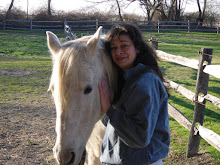It was easier for many students to make observations about the envelopes rather than inferences. After discussing inferences again, and giving an example, they were able to understand the concept better. Some took it to an extreme, they were making inferences without any observation to back it up. For example, one student said the envelope fell in the mud when there were no dirt marks on it. When asked about this inference, he said it could have happened but didn't notice anything to give him that clue. Most of the students did a good job making at least 1-2 inference. Some needed more prompting. The students who seemed to have more experiences in their own lives were better able to make inferences. I really helped the students when showed them the sample list of observation/inferences on the overhead. Next year, I think I might show this first with a class and see if they give more in depth responses than the other classes.
After Mid-Summative Test
The student had a partial understanding of the lessons objectives. They were able to identify the difference between an observation and an inference; however, they had difficulty explaining why something was an inference. Specifically, only about 50% could cite the observation they used to determine if it was an inference. Excluding letter 'g' "student pleased with experiment." My students were able to identify the smile on the face as an observation for this inference. Letters 'b' and 'e' confused them. Some stated that "plants planted same day" was an inference because the observation was that they were different sizes. I had to go back and explain to the students to read the sides of the containers and use that as part of their observations. It seemed half the students overlooked this the first time.
Subscribe to:
Post Comments (Atom)

See my comment on the discussion board part of Blackboard.
ReplyDelete